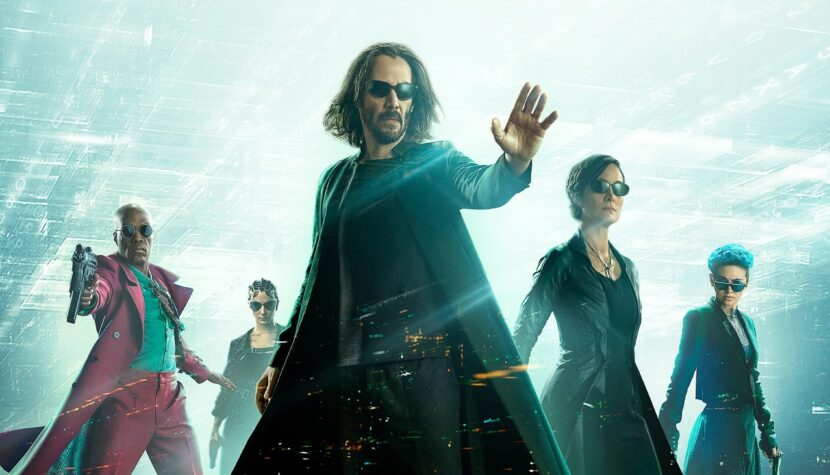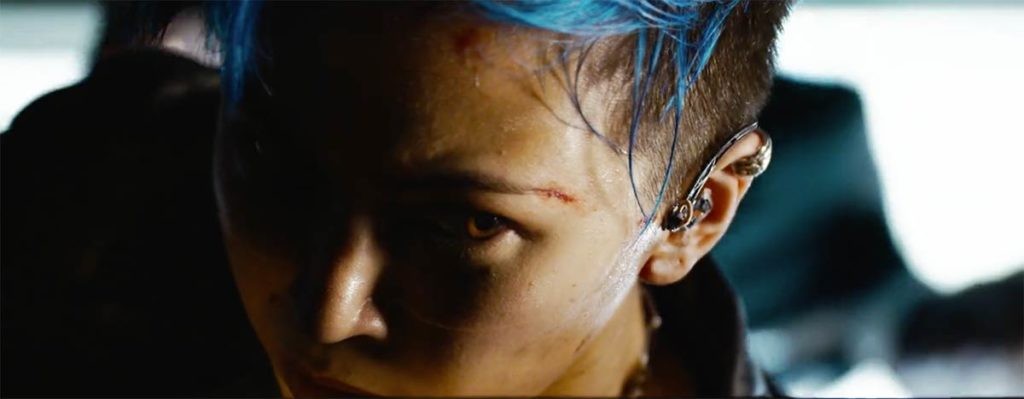THE MATRIX RESURRECTIONS. A Parody that Wanted to Be a Monument

Just as Neo couldn’t believe he was living in a simulation, Matrix fans rubbed their eyes in astonishment when the fourth installment of the series was announced. But in hindsight, this could have been expected if we look at the trends of recent years. Mad Max, Blade Runner, Star Wars, Terminator, Alien – all these famous, fantastic brands have been revived to varying degrees of success. This demonstrates that popular culture often takes the form of an ouroboros, constantly repeating the same content, ultimately consuming itself. Surprisingly, Lana Wachowski decided to make this a leitmotif of the fourth installment of Matrix.
As we well know, the conclusion of The Matrix Revolutions didn’t exactly leave room for continuing the story. For this reason, there was once talk of a possible prequel, telling the stories of the previous “chosen ones” (because, as we know from The Matrix Reloaded, Neo wasn’t the only one who saw the truth). However, this remained in the realm of speculation. When it was officially hinted that the new project would be a sequel with reboot characteristics and that Keanu Reeves (riding the wave of popularity from John Wick) and Carrie-Anne Moss would be involved again, the initial escalation of enthusiasm inevitably raised the fundamental question: how to continue the path of a hero who is no longer there?

The title of the film gave away a hint. It has long been known that the Matrix series was very intelligently grounded in Christian symbolism, but also somewhat Buddhist. In other words, besides science fiction, these films dealt with the interweaving of religious and philosophical conclusions, giving the whole depth. So, if we know that the chosen one who met his demise in The Matrix Revolutions is nothing but a reference to the sacrifice of Christ, then to complete the picture, we should also receive an act of resurrection to make the message clear. Apparently, the creators went down this path, although until the end of the screening, it was not certain how to interpret the title of the film, whether the chosen one was actually resurrected, or if it was another deceptive metaphor.
The greatest advantage of the plot of the fourth part was that it was outlined in a concise manner before the screening to mislead our tracks. The trailer was perfectly designed because instead of dispelling doubts, it provided new ones. And so, we finally stand before this mirror. We confront the end result. What do we get?

I’ll divide my conclusions from watching the new Matrix into two parts. You can look at the film in two ways, in accordance with the symbolism of the pills, which are supposed to present the hero with a choice between staying in the world of illusion or facing the truth. At first glance, it’s evident that Lana Wachowski did her homework well and thought carefully about how to engage the audience with her vision. I can’t reveal the plot because I’ll spoil the fun, but after the first few minutes of the screening, I concluded that the creators showed considerable cunning and sensitivity. Cunning, because it turns out there was a simple way to bring back the old friend to the land of the living. Sensitivity, because the new Matrix, instead of continuing the grandeur of the previous two sequels, this time clearly toned down the seriousness, without shying away from humor. Wachowski wielded self-referentialism as her weapon – constantly referring to the previous installments, almost directly quoting them. The dimension of the conflict crucial to the series, the conflict between man and machine, was also interestingly expanded, moving towards coexistence.
And in this respect, you can feel the freshness and lack of pomposity. If we allow ourselves to be carried away and understand the director’s intentions, who wanted good for us, had an idea, and didn’t hesitate to put it into practice. New, fresh faces were added to the old actors (some of whom were already seen in Sense8). It’s a paradox that in a film that was made with the participation of two actors synonymous with the series, the new actors are the most interesting and perform the best (they’re all great, but Jessica Henwick stands out the most). The slightly dark, and certainly rough, style of the previous installments, characterized by the color of green decay, this time was replaced by a modern combination of blue with yellow and greater exposure to light. So, it was supposed to be a reset not only of content but also of the image, which, drawing from the series tradition, was supposed to introduce a new quality. You can feel it in some scenes, like in the first sequence with Neo, who once again can’t find his place in the world he’s living in. This is the kind of flair and knowledge of the brand that allowed for palpable convention play in fragments. However, this duo was not enough for the entire screening. For most of the time (and it must be emphasized that the film is not short), I struggled with thoughts because I wanted and tried to have a good time, but at the same time, I saw that the new Matrix has serious problems.

That’s when the truth dawned on me. One must have great reserves of fanatical love not to see what Resurrections really are. This film is so entangled in meta-communication that at times it sounds and looks like a parody of the series rather than its full-fledged continuation. The most difficult issues related to bringing the main characters back to life are explained here in the simplest way possible, while the paths that were supposed to smoothly and efficiently introduce us to this world are almost maximally complicated. Far too much time in the film is devoted to explaining to the audience the meaning of the film’s creation. It looks a bit as if Lana is trying to justify herself to us a bit. But the worst part is that the mentioned self-referentialism is excessively used, because instead of elevating the plot to a new, previously distant level, it serves the director as a cover against potential criticism. The fourth Matrix wants so much to be like the first Matrix that in the end, it doesn’t know what it really is.
However, the greatest weakness of Resurrections is not so much what is said in it, but that it is said too much. The strength of the Matrix lies in the perfect balance of action with moments of interesting pauses that explain the meaning of this whole circus. The fourth part clearly focused on this second aspect, forgetting that this series has always been marked by unforgettable action sequences. Those from the first part, after all, went down in the history of cinema, wrote a new chapter in special effects. Even in the over-talked-about and inflated sequels, we can point out a few scenes (like on the highway, of course) that we can watch endlessly, even if we’re not interested in the movie itself. Unfortunately, Resurrections lacks such scenes. Duels, whether with pistols or classic kung fu, lack the breath of solemnity that we remember so well from the trilogy.

There is no scene in this film that I will ponder over for weeks, months, or years after the screening. We already know that. However, there are a few interesting thoughts that create a neat analogy to the current situation in the world. I expected Lana Wachowski to use the pandemic to strengthen the metaphor, and I wasn’t disappointed. Resurrections is a film about the role of memory and how it has a crucial impact on our existence. We are what we think, and the only world that matters to us is the one in our head. Therefore, having a good filter of information is so important, because if we don’t have it, Neo must enter the stage and free us from illusion. However, his fight seems to be lost, as one of the film’s characters astutely observes. People don’t want freedom, they don’t understand it; they prefer the blue pills of oblivion because they want, yes, they want to be controlled.
In summary, this return was average. It’s uneven. Neo doesn’t look like Neo, he looks like John Wick. The new stylistic direction distracts attention, lacking the elements to build atmosphere. The narrative ideas, on the other hand, are very bold, but they sound overly safe in some parts. However, as a declared fan of the series, I must admit that Lana Wachowski did not offend me in any way with this film. I appreciate its surprising sincerity. I like some of the conclusions, I like the new philosophical themes. It’s a textbook example of a film standing at a crossroads, with the potential to divide audiences and critics. Whether you allow yourself to be carried away depends mainly on you.

